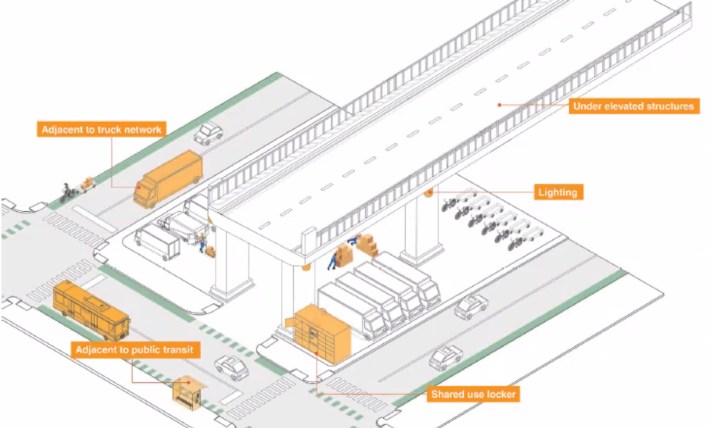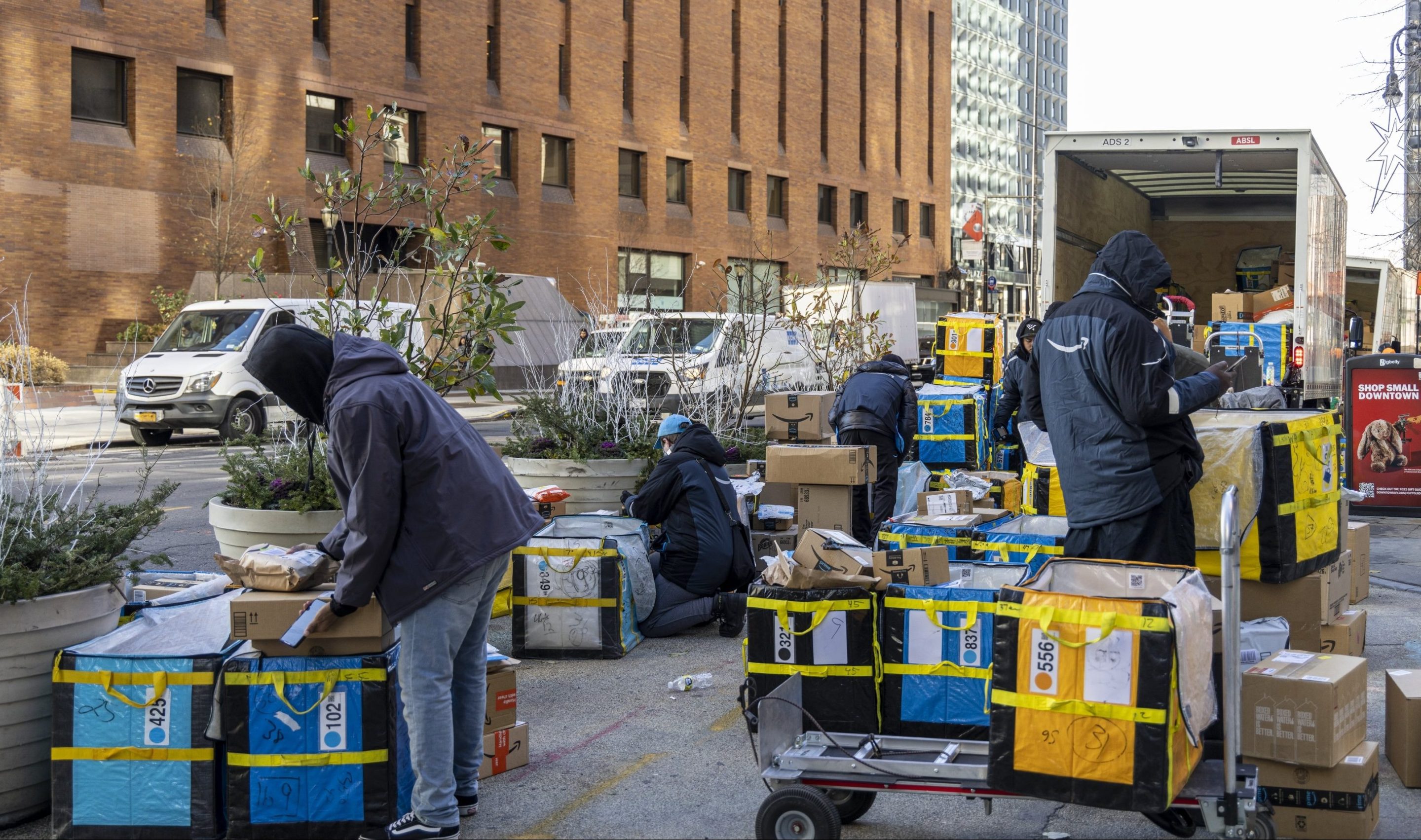A pair of zones to transfer packages from trucks to smaller vehicles like cargo bikes will open beneath the Brooklyn-Queens Expressway later this year, Department of Transportation officials said on Wednesday.
The area below the BQE at Meeker and Kingsland avenues in Greenpoint and at Park and Washington avenues in Clinton Hill will host heavy haulers and replace their "last-mile" trips through neighborhood streets with smaller delivery modes at the so-called "microhubs," DOT officials told locals during a virtual info session.
"[These hubs] would be concentrating that truck traffic ... instead of having those trucks circulating through our residential streets and in our residential communities," said Catherine Ponte, a DOT freight planner and project manager.

Two to four companies making four daily truck trips apiece will share the space, which currently houses an underused metered parking lot, according to DOT.
The firms will have to use that space to shift deliveries off big trucks within a half-mile radius, or risk losing their permit to use the microhub if they illegally unload packages in the street.
DOT plans to open as many as 20 microhubs citywide later this year — both off the street and along the curb — as part of its three-year pilot, the reps said.
The pilot first launched last summer and was required by a 2021 Council law by then-Speaker Corey Johnson, which passed amid an e-commerce explosion during the Covid-19 pandemic.
The city is also setting up three microhubs in the streets on the Upper West Side, as part of a curb reform plan in a part of the uptown neighborhood, starting this year and into 2025.
Eight in 10 New Yorkers get at least one package a day, according to DOT, and 90 percent of goods come into the city via truck, above the national average of 70 percent.
The status quo of trucks double parking and unloading in the street costs New Yorkers nearly $250 million a year in lost productivity and pollution, a report revealed last year.
Locals welcomed the plan to get some of the trucks from taking over much of the streets and sidewalks with delivered goods, but urged DOT to also set up more loading zones.
"It is chaos all over the place," said Karen Nieves, a manager at Evergreen, a Brooklyn business advocacy group. "There should be additional neighborhood loading zones, especially again in the higher-density [areas], because it's not going to stop the double parking and all of the trucks that are making deliveries throughout the neighborhood."
Residents called on the city to increase safety for pedestrians and cyclists in the area.
"Right now, it's already pretty chaotic and dangerous, so with increased truck traffic, I'm just worried about pedestrians and cyclists and trucks and drivers trying to navigate [the area]," said Meryl LaBorde.
Transportation planners should also finally finish up the much-delayed and pared-back McGuinness Boulevard project, which would eventually connect a bike lane from the BQE all the way up to the Pulaski Bridge, locals told DOT.
"I really wonder and worry about cyclist safety and just decreasing conflict," said Bronwyn Breitner, an advocate with the group Make McGuinness Safe, which pushed for that street's redesign. "I know these [street safety projects] are hard and I know that when they are done in a watered-down way, it creates conflicts between drivers and pedestrians and cyclists — and then we all hate each other, and then the neighborhood's pissed at you."
The agency reps said they would look into any upgrades to the streetscape.
The effort to finally build out microhubs is part of a long-term effort that spans multiple mayoral administrations to reduce truck traffic. The city has previously discussed moving more freight on the so-called Blue Highway (aka the rivers). But that effort has been exceptionally slow.
The mayor has also said he would create an entirely new city agency — the Department of Sustainable Delivery — though there has been no updates on that since the January announcement.
But more recently, the Adams administration successfully changed the rules to legalize bigger cargo bikes in an effort to spur their user in last-mile deliveries.






